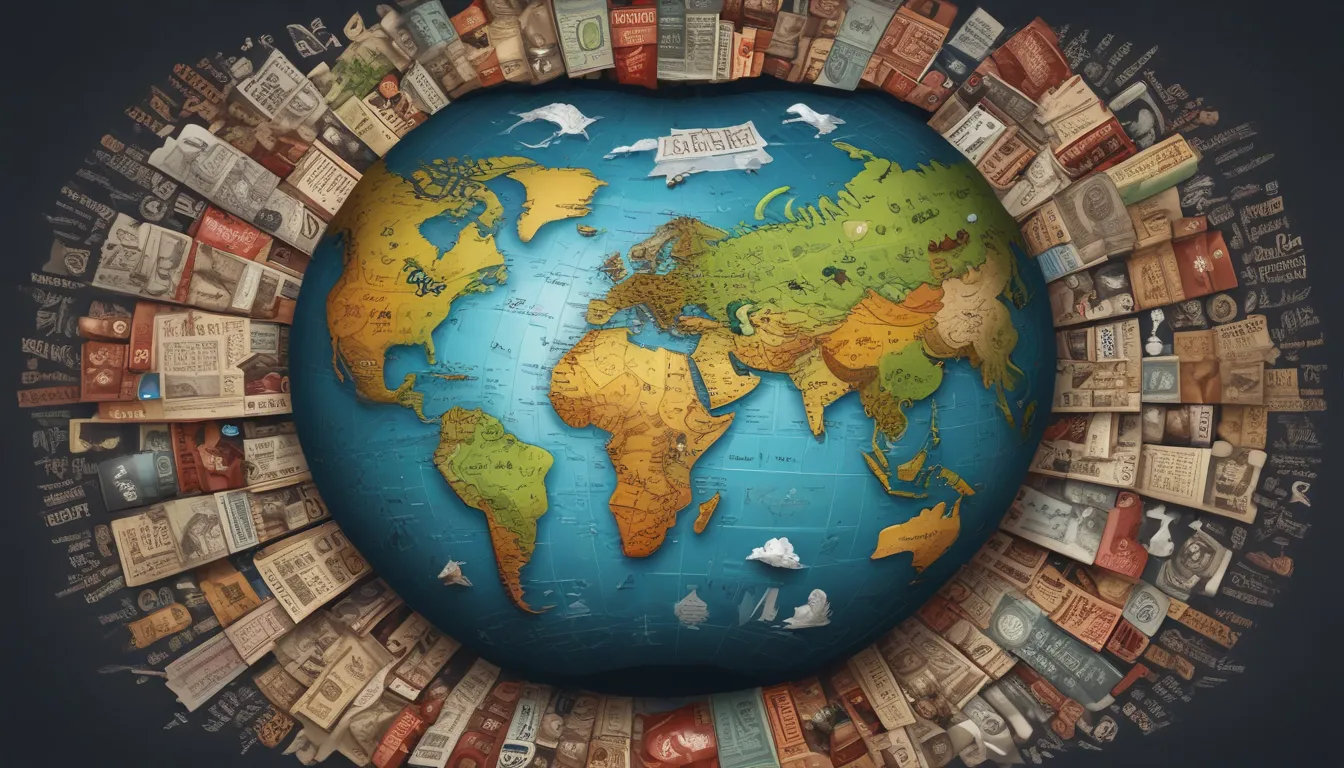A Note About Images: The images used in our articles are for illustration purposes only and may not exactly match the content. They are meant to engage readers, but the text should be relied upon for accurate information.
Language is not just a tool for communication; it is a cornerstone of human culture and identity. The distribution of languages across the globe paints a vivid picture of the diverse tapestry of linguistic expression that enriches our world. In this article, we will take a deep dive into the fascinating realm of language distribution, uncovering eight astounding facts that shed light on the global landscape of languages.
Unveiling the Linguistic Mosaic: Around 7,000 Languages Worldwide
The sheer number of languages spoken worldwide is mind-boggling. With approximately 7,000 languages echoing through different corners of the globe, our planet is a vibrant mosaic of linguistic diversity. From the widely spoken languages like English, Spanish, and Mandarin Chinese, to the endangered indigenous languages on the brink of extinction, each language contributes a unique thread to the rich tapestry of human expression.
Embracing Bilingualism: Over Half of the Global Population Speaks Multiple Languages
In today’s interconnected world, the ability to speak multiple languages is a valuable asset. More than half of the global population is bilingual or multilingual, reflecting the increasing significance of globalization, travel, and cross-cultural communication. Embracing bilingualism not only opens doors to new opportunities but also fosters a deeper understanding of different cultures.
The Power Trio: Mandarin Chinese, Spanish, and English Lead the Pack
When it comes to the most spoken languages in the world, Mandarin Chinese takes the top spot with over 1 billion native speakers. Following closely behind are Spanish, with approximately 460 million native speakers, and English, boasting around 380 million native speakers. These three languages play a pivotal role in global communication and serve as bridges that connect people from diverse backgrounds.
Preserving Cultural Heritage: Language Distribution and Cultural Diversity
Languages and cultures are intertwined, each influencing and shaping the other. The distribution of languages across different regions is instrumental in preserving cultural diversity, as languages carry within them the histories, traditions, and values of the communities that speak them. Through language, we gain insight into the unique identity and heritage of diverse cultures around the world.
Endangered Echoes: More Than Half of the World’s Languages Are in Peril
Despite the vast array of languages spoken globally, many are facing the threat of extinction. Factors such as globalization, cultural assimilation, and the dominance of major languages have put more than half of the world’s languages at risk. Efforts to preserve and revitalize endangered languages are crucial in safeguarding the richness of linguistic diversity for future generations.
Exploring Language Hotspots: Where Linguistic Worlds Collide
In some regions known as language hotspots, a myriad of languages intersect, creating a fascinating tapestry of linguistic diversity. These hotspots emerge from historical events, migrations, and cultural interactions, offering a treasure trove of opportunities for linguistic research and exploration. They serve as living testimonials to the dynamic nature of language and culture.
The Dynamic Influence of Migration: Shaping Language Distribution
Human migration and diaspora communities play a pivotal role in shaping the distribution of languages. As people move to new lands and settle in different regions, languages spread, intertwine, and give rise to new dialects or creole languages. This dynamic interaction enriches the linguistic landscape, showcasing the ever-evolving nature of human communication.
Reviving the Voices of the Past: Language Revitalization Efforts
Amidst the threat of language extinction, various initiatives are underway to revitalize endangered languages and preserve linguistic heritage. Communities, researchers, and organizations collaborate to document, teach, and promote endangered languages, ensuring that they remain vibrant and relevant in an ever-changing world. Language revitalization efforts are vital in safeguarding cultural identities and fostering intergenerational continuity.
Conclusion: Embracing the Global Tapestry of Languages
In conclusion, the study of language distribution offers a fascinating glimpse into the intricate web of human communication and cultural expression. From the dominance of major languages to the delicate threads of endangered indigenous languages, the linguistic landscape is a reflection of our shared heritage and diversity. As we navigate a globalized world, celebrating and cherishing the richness of linguistic diversity fosters mutual understanding, respect, and unity across diverse cultures and communities.
FAQs: Navigating the Realm of Language Distribution
-
Which language is the most widely spoken in the world?
Mandarin Chinese holds the title of the most widely spoken language with over 1 billion native speakers. -
What is the least spoken language?
Liki, spoken by only 6 individuals in Indonesia, stands as the least spoken language in the world. -
How many languages are endangered?
Approximately 2,500 languages are classified as endangered, facing the risk of extinction. -
Can languages become extinct?
Yes, languages can become extinct when there are no fluent speakers left, resulting in the loss of cultural heritage and identity. -
How does language distribution impact culture?
Language distribution shapes and preserves cultural identities, influencing various aspects of a community’s heritage, traditions, and societal dynamics. -
Can language distribution change over time?
Yes, language distribution is subject to change due to factors like migration, globalization, and urbanization, reflecting the evolving nature of human communication and interaction.
Embarking on a Journey of Discovery
As we unravel the fascinating world of language distribution, we invite you to explore the diverse tapestry of languages that enrich our global community. Each language is a thread that weaves a unique story of culture, history, and identity, connecting us across continents and generations. Embrace the beauty of linguistic diversity, celebrate the voices that echo through time and space, and embark on a journey of discovery through the kaleidoscope of languages that shape our world.






